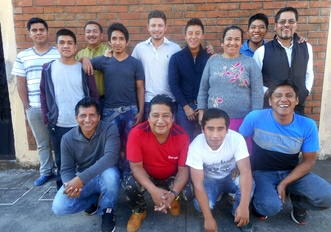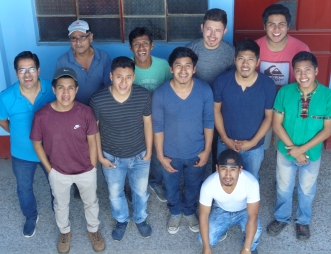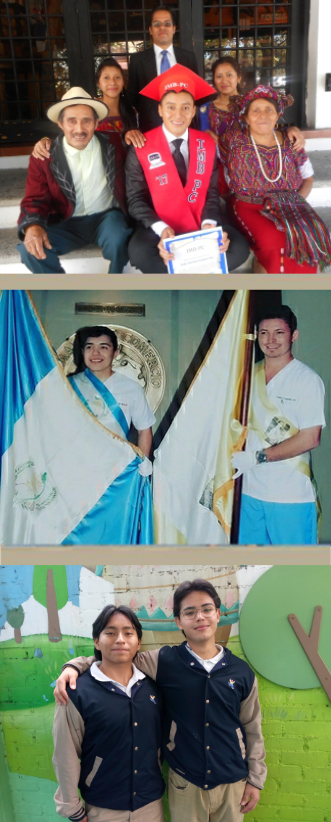 |
|||||||||
Only A Child’s work with disadvantaged youth in Guatemala seeks to break the cycle of chronic economic need while responding to its ramifications: hunger, malnutrition and disease; hopelessness and despair; delinquency and violent crime. We recognize and respond to critical social concerns in present day Guatemala by offering educational resources and opportunities for betterment to young lives previously denied them.
Organizational Description and GoalsConceived and founded in 1994, Only A Child spent the first two decades of its existence working almost excursively with Guatemala City’s homeless children and youth. Our initial years were spent in outreach, sharing the streets with its youngest residents. Shortly after the turn of the century we rethought our mission and opened a shelter, while maintaining contact with the streets of the city. Not long after opening a shelter in early-2000, Only A Child opened an in-house carpentry shop and launched a back-to-school program at the urging of our residents, all of whom had come to us from the streets of Guatemala City. Most of them had not attended school for years, and despite having reached their mid-to-late teens, had yet to complete grade school. Fortunately, there was an abundance of schools that offered weekend programs for young adults who had fallen behind with their studies.
In 2015, the surge in migration - large numbers of Guatemalans leaving behind their homes primarily located in the Quiche region of the country’s western highlands - compelled us to once again rethink our mission. The migrants traveled to the United states in pursuit of a better quality of life, after having concluded that such opportunity was unavailable to them in their homeland. For the past 10 years, Only A Child’s primary objective has been to provide secondary and university-level education to youths coming from rural areas and impoverished backgrounds. Given their previous circumstances, our residents have much to overcome. The communities which they called home were often isolated and lacking in resources. Options for education and employment are limited in such areas, all but guaranteeing that their coming-of-age residents will be channeled into lives mirroring those of the generations which preceded them. Our goal is that, upon completing their studies, our graduates will return to their communities to serve as examples or other young men and woman, while inspiring a level of expectation uncommon to the areas from which they come.
OAC maintains a home away from home for youths who have left family behind and, in many cases, traveled great distances in search of a better life, with our assistance. The home that houses our residents serves as the focal point of our ministry, as much of its function and activity takes place there. Our home is comfortable and located in a neighborhood where the risk of crime is relatively low and inner city noise is minimal. OAC provides a home which is safe and stable, allowing us to maintain an environment which is study friendly. In the midst of the considerable instability and danger which has long plagued Guatemala City, we are able to shield our residents from the kinds of concerns which will inhibit their ability to maximize the opportunities we provide them, while making the most of their God given abilities and potential. To date, OAC has provided a home for 77 residents. Relatively few lived with us for a matter of days. Another small percentage stayed for months. The vast majority, however, remained under our roof for years. For those who transitioned from adolescence to adulthood under our care, the time has been transformational. Our longtime residents develop into responsible, caring and honorable young men during their tenure at OAC.

Only A Child recently closed its carpentry shop. The decision was reached after much deliberation by our Board of Directors. For much of its tenure, our shop was staffed by former residents of the street, who had come to us in search of stability and direction. With time, however, it became difficult to find candidates from the same source we had previously served, while maintaining the goals of our program. There are many youths living in impoverished rural areas, looking to improve their options by furthering their education. Lack of opportunity proved to be the major obstacle. Understanding the shift in the needs of the population we serve, Only A Child’s Board of Directors chose to realign our objectives and focus on providing opportunites for higher education to youths previously denied them. It is a commitment we stand behind; one that we believe will bring far-reaching benefits to the Only A Child youths and extend to the broader community.

Education
Delinquency remains a major concern in Guatemala. Lack of access to quality education, resulting in an inability to find dignified, life-sustaining work fuels much of the problem - causing fundamentally solid young people to succumb to desperation and follow paths they would normally avoid under more preferable circumstances. The same desperation has fed the surge in migration which has gripped Northern Central America during the last 15 years. According to the Washington Post, the face of Guatemala’s migration is youthful. Roughly 8 % of 17 year old adolescents in Central America’s Northern Triangle (Guatemala, El Salvador and Honduras) left their homelands between 2011 and 2016. The percentage has likely grown during the intervening years, as the conditions compelling the exodus have continued to deteriorate throughout that time.
Our current residents come to us seeking to overcome the meager expectations of what can be accomplished coming from the areas and the backgrounds they have known. They aspire to complete high school before moving on to pursue an undergraduate degree at university during their tenure at OAC. In October, 2025, two of our current residents will graduate from high school. They will become our 24th and 25th high school graduates, respectively. Each plans to pursue a university education, making them our 11th and twelfth residents to do so. Two from that group have earned associate degrees. Two more have completed their undergraduate studies and plan to pursue a Master’s degree. Two other still will complete their undergraduate studies at the end of this year and also plan to pursue Master’s degrees in their respective fields.
Such ambitions and accomplishments are rare in Guatemala where approximately 8 % of the population possesses an undergraduate degree and an estimated 1 to 2 percentage of the population earns a Master’s degree. It is common knowledge that, for all practical purposes, the southern U.S. border has been closed since the beginning of 2025. As a consequence of this new reality, the possibility for pursuing a better life beyond their own border is currently off the table for Guatemalan youths. It likely will remain so for some time to come, at least through the end of 2028. It seems safe to say that for young people coming from impoverished backgrounds, the possibilities for betterment remain minimal in Guatemala, offering a poor alternative to the U.S. model. Higher education continues to offer the best opportunity to find viable employment in Guatemala’s hobbled economy.

|
| ||||||
| ||||||


